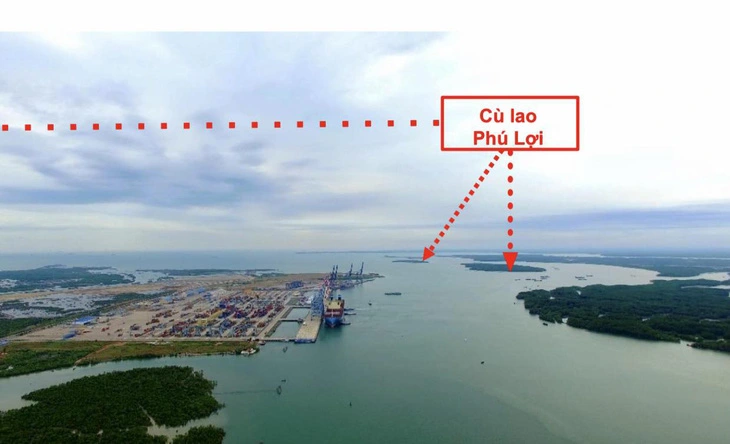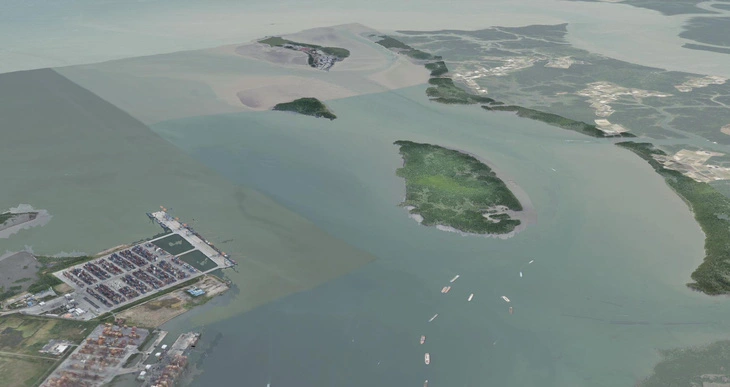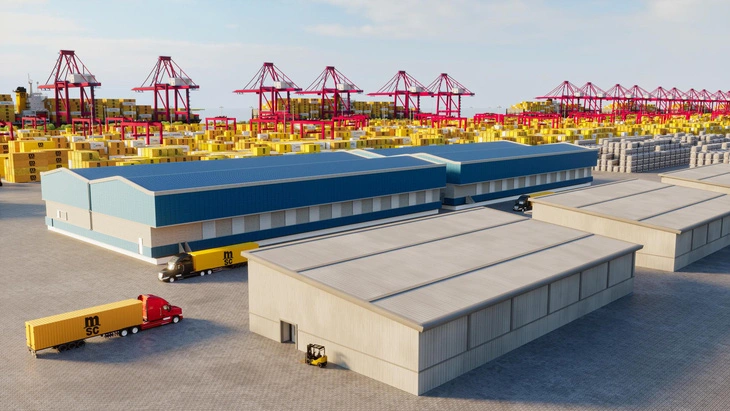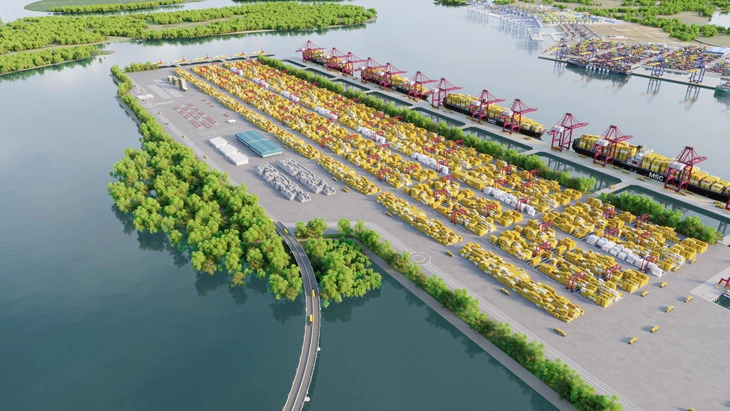Portcoast Consultant Corporation, the consulting unit and investor of the Can Gio international transshipment port project in the namesake outlying district of Ho Chi Minh City, has publicized the design for it, which requires an estimated investment of nearly US$5.4 billion.
Portcoast said it had assessed the impact of the project on the environment in line with the law.
The port will be developed in the Cai Mep Estuary with favorable connectivity with navigational channels and waterways.
Shipping activities are plentiful on the Cai Mep-Thi Vai shipping route, so the development of a transshipment port will not affect the current ecosystem in the area.
|
|
| The port will be developed on Phu Loi Islet in Can Gio District, Ho Chi Minh City, which is isolated from adjacent areas and has favorable connectivity with navigational channels and waterways. |
The project will be isolated from the core zone of the Can Gio Mangrove Biosphere Reserve and protected marine areas in Ho Chi Minh City, which is completely appropriate to the national environmental protection strategy.
Modern technology will be employed during the port construction, thus reducing the impact on the environment.
|
|
| An aerial view of Phu Loi Islet in Can Gio District, Ho Chi Minh City. The area is in the buffer zone of the Can Gio Mangrove Biosphere Reserve. |
The Ho Chi Minh City Department of Transport has submitted a study of the port project to the municipal People’s Committee.
Upon completion, the port will play a great role in the development of the marine economy in the southern key economic zone and the country as a whole and help Ho Chi Minh City maintain its position as a logistics hub in the region and develop its sea transport.
The port is expected to create tens of thousands of jobs, contribute VND34-40 trillion ($1.4-1.7 billion) to the state budget per year, and attract huge investment from enterprises to develop modern infrastructure facilities.
|
|
| The project can be connected to the Vietnam East Sea through the Vung Tau-Thi Vai shipping route. Ho Chi Minh City also has favorable weather conditions for the port operation with an average annual temperature of 26.8 degrees Celsius and experiences a small number of large storms. |
|
|
| The city will use the most advanced technology to operate the Can Gio international transshipment port. Equipment at the port will use electricity, thus minimizing environmental pollution. A specialized terminal operating system will be employed to optimize the management and operation of the port. |
|
|
| The city will prepare for the development of the port until 2024, construct it from 2024 to 2026, and put it into operation in 2027. The port will be capable of receiving mother ships up to 250,000 deadweight tonnage (DWT), feeder ships with a tonnage of 10,000-65,000 DWT, and barges up to 8,000 metric tons. |
|
|
| The investor will fund the port, auxiliary facilities, and a logistics service center, while the capital for traffic and other technical infrastructure will be sourced from the state budget and other legal capital resources. |
|
|
| The Can Gio international transshipment port, when in place, will attract huge investment from enterprises to develop modern infrastructure facilities, create jobs for some 6,000-8,000 laborers on the spot and tens of thousands of employees in logistics services, and contribute VND34-40 trillion ($1.4-1.7 billion) to the state budget per year. |
|
|
| The port will be developed on an islet to which no road has been built. By 2030, Ho Chi Minh City will have built Can Gio Bridge linking Can Gio and Nha Be Districts, expand Rung Sac Road in Can Gio, and connect the road with the Ben Luc-Long Thanh Expressway. |
|
|
| The city will later develop roads connecting the port with Rung Sac Road, an elevated road along Rung Sac Road, and a metro line connecting the Can Gio sea urban area and the city’s fourth metro line planned to stretch from District 12 to Nha Be District. |
Like us on Facebook or follow us on Twitter to get the latest news about Vietnam!











Max: 1500 characters
There are no comments yet. Be the first to comment.